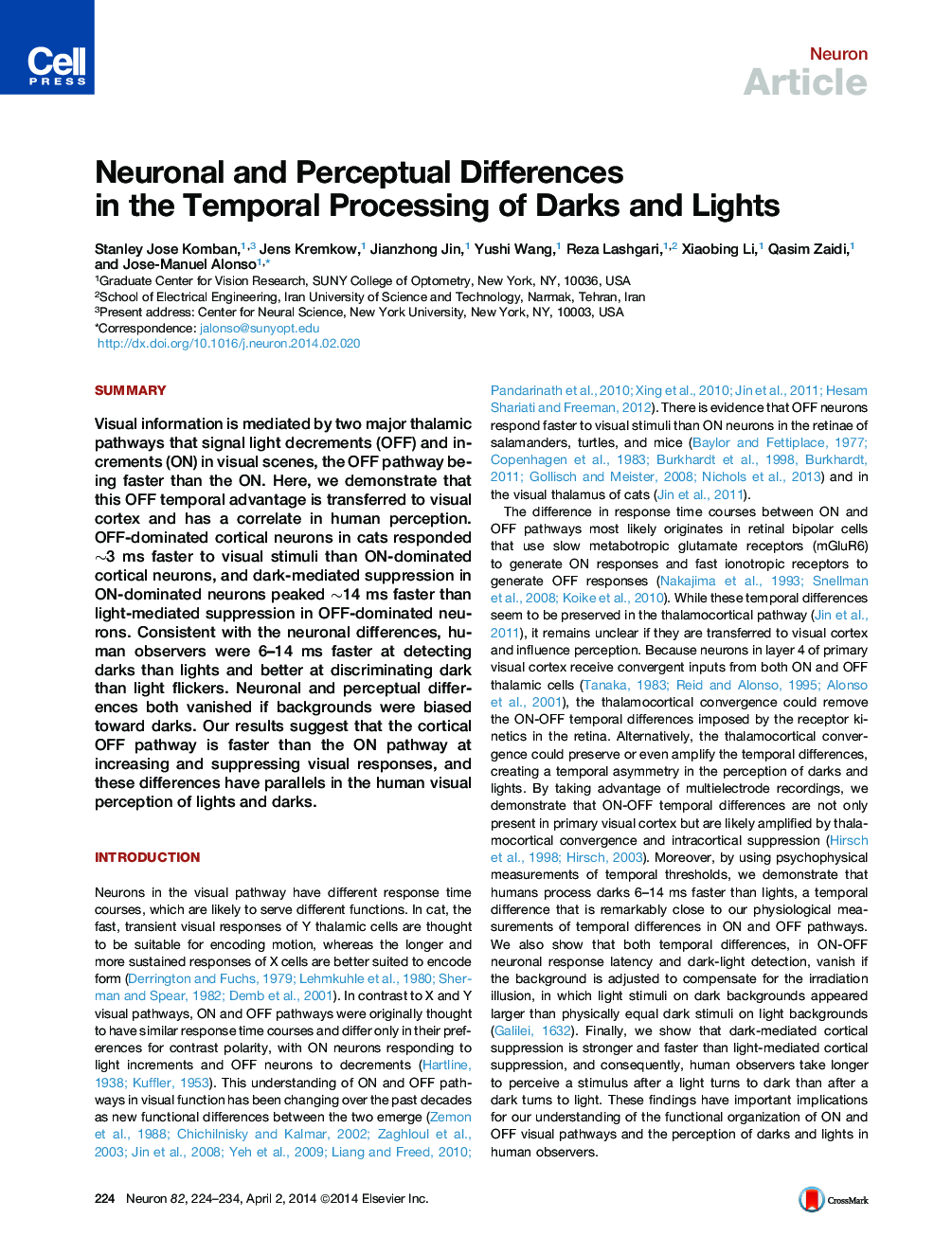| Article ID | Journal | Published Year | Pages | File Type |
|---|---|---|---|---|
| 4321093 | Neuron | 2014 | 11 Pages |
•ON-OFF temporal differences are preserved and amplified in primary visual cortex•ON-OFF differences in latency and suppression strength have perceptual consequences•Neuronal and perceptual differences vanish on backgrounds biased toward darks•Dark-mediated suppression in ON-dominated neurons is faster than light-mediated suppression in OFF-dominated neurons
SummaryVisual information is mediated by two major thalamic pathways that signal light decrements (OFF) and increments (ON) in visual scenes, the OFF pathway being faster than the ON. Here, we demonstrate that this OFF temporal advantage is transferred to visual cortex and has a correlate in human perception. OFF-dominated cortical neurons in cats responded ∼3 ms faster to visual stimuli than ON-dominated cortical neurons, and dark-mediated suppression in ON-dominated neurons peaked ∼14 ms faster than light-mediated suppression in OFF-dominated neurons. Consistent with the neuronal differences, human observers were 6–14 ms faster at detecting darks than lights and better at discriminating dark than light flickers. Neuronal and perceptual differences both vanished if backgrounds were biased toward darks. Our results suggest that the cortical OFF pathway is faster than the ON pathway at increasing and suppressing visual responses, and these differences have parallels in the human visual perception of lights and darks.
